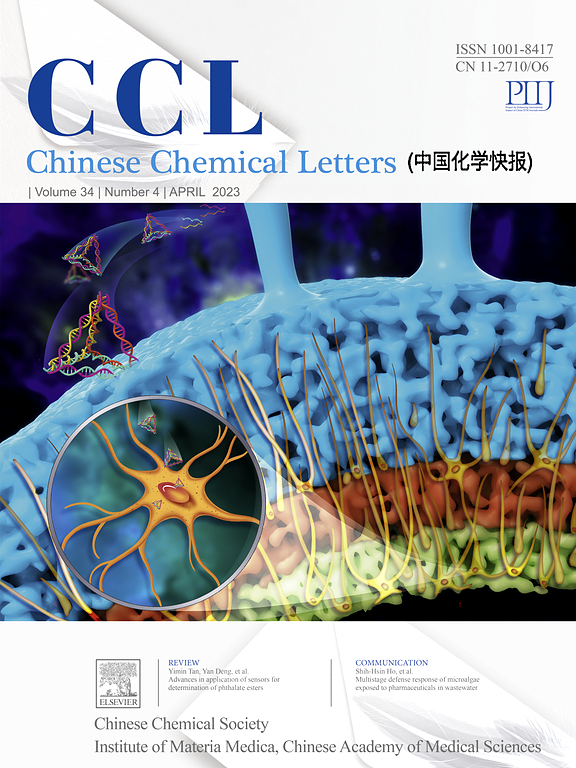Modified triphenylamine donors with shallower HOMO energy levels to construct long-wavelength TADF emitters of efficient organic light-emitting diodes
IF 9.4
1区 化学
Q1 CHEMISTRY, MULTIDISCIPLINARY
引用次数: 0
Abstract
Triphenylamine (TPA) is the most promising donor fragment for the construction of long-wavelength thermally activated delayed fluorescence (TADF) emitters owing to its suitable dihedral angle that could enhance radiative decay to compete with the serious non-radiative decay. However, the moderate electron-donating capacity of TPA seriously limits the selection of acceptor for constructing long-wavelength TADF emitters with narrow bandgaps. To address this issue, in this work, the peripheral benzene of TPA was replaced with 1,4-benzodioxane and anisole to obtain two new electron-donating units N-(2,3-dihydrobenzo[b][1,4]dioxin-6-yl)-N-phenyl-2,3-dihydrobenzo[b][1,4]dioxin-6-amine (TPADBO, −5.02 eV) and 4‑methoxy-N-(4-methoxyphenyl)-N-phenylaniline (TPAMO, −5.00 eV), which possess much shallower highest occupied molecule orbital (HOMO) energy levels than the prototype TPA (−5.33 eV). Based on TPA and the modified TPA donor fragments, three TADF emitters were designed and synthesized, namely Py-TPA, Py-TPADBO and Py-TPAMO, with the same acceptor fragment 12-(2,6-diisopropylphenyl)pyrido[2′,3′:5,6]pyrazino[2,3-f][1,10]phenanthroline (Py). Among them, Py-TPAMO exhibits the highest photoluminescence quantum yield of 78.4 % and the smallest singlet-triplet energy gap, which is because the introduction of anisole does not cause significant molecule deformation for the excited Py-TPAMO. And Py-TPAMO-based OLEDs successfully realize a maximum external quantum efficiency of 25.5 % with the emission peak at 605 nm. This work provides a series of candidate of donor fragments for the development of efficient long-wavelength TADF emitters.

具有较浅 HOMO 能级的改良三苯胺供体,用于构建高效有机发光二极管的长波长 TADF 发射器
本文章由计算机程序翻译,如有差异,请以英文原文为准。
求助全文
约1分钟内获得全文
求助全文
来源期刊

Chinese Chemical Letters
化学-化学综合
CiteScore
14.10
自引率
15.40%
发文量
8969
审稿时长
1.6 months
期刊介绍:
Chinese Chemical Letters (CCL) (ISSN 1001-8417) was founded in July 1990. The journal publishes preliminary accounts in the whole field of chemistry, including inorganic chemistry, organic chemistry, analytical chemistry, physical chemistry, polymer chemistry, applied chemistry, etc.Chinese Chemical Letters does not accept articles previously published or scheduled to be published. To verify originality, your article may be checked by the originality detection service CrossCheck.
 求助内容:
求助内容: 应助结果提醒方式:
应助结果提醒方式:


